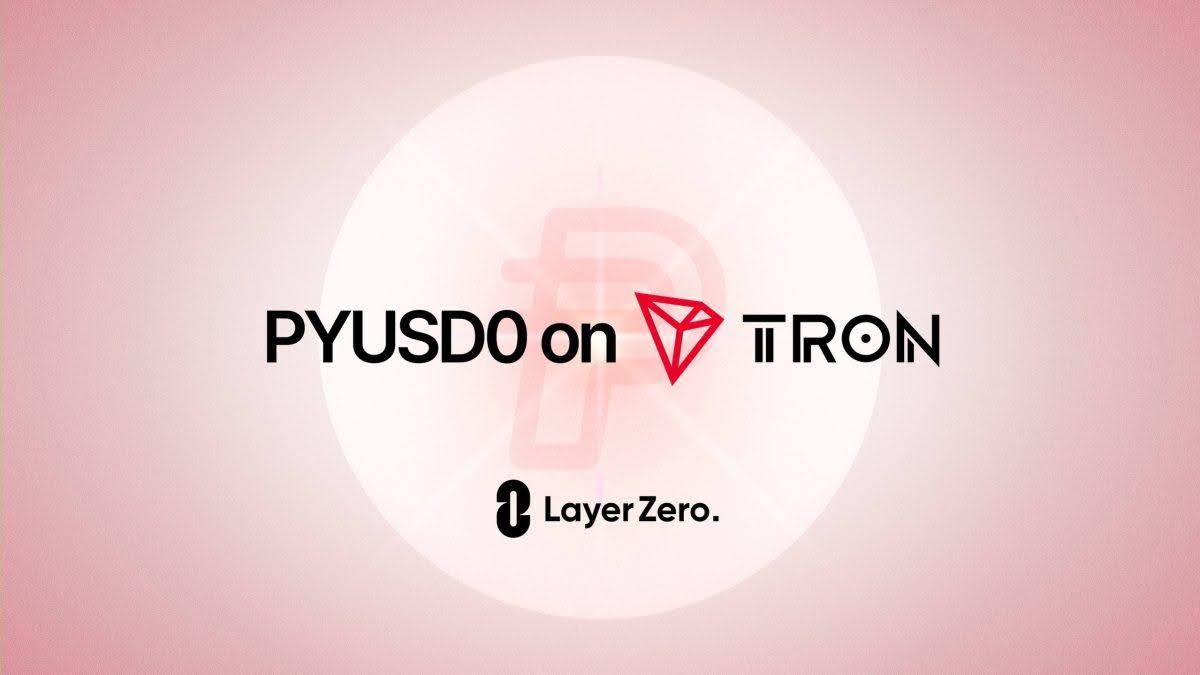TRON Joins PayPal’s Multi-Chain Stablecoin Push as PYUSD Expands to 9 Blockchains
Key Takeaways:
- PayPal’s USD stablecoin, PYUSD, expands to nine additional blockchains, including TRON.
- The new PYUSD0 token leverages LayerZero’s OFT standard, enabling seamless cross-chain transfers.
- TRON strengthens its role as a global settlement hub for stablecoins, offering scale and low costs.
The stablecoin market has reached another major milestone. PayPal’s PYUSD, the first U.S. dollar-backed stablecoin launched by a global payments giant, is now expanding beyond its original networks. With the help of LayerZero’s omnichain technology, PYUSD0 is debuting on TRON and eight other chains, further integrating stablecoins into the backbone of digital finance.
Read More: PayPal Expands PYUSD Stablecoin to Stellar Blockchain, Targeting Global Payments and Remittances

PayPal’s Stablecoin Goes Omnichain
When PayPal introduced PYUSD in 2023, it became the first major fintech company to issue a fully regulated U.S. dollar stablecoin. Initially deployed on Ethereum and later extended to chains such as Solana, Arbitrum, and Stellar, PYUSD quickly positioned itself as a bridge between traditional finance and the blockchain economy.
PayPal is currently going global with its strategy of a stablecoin through the release of PYUSD0. PYUSD0 is based on the LayerZero Omnichain Fungible Token (OFT) standard and enables the holder to transpose the token to various networks without compromising the value or fungibility of the token..
The expansion brings PYUSD to Abstract, Aptos, Avalanche, Ink, Sei, Stable, Flow, Berachain, and importantly, the experience is still straight forward to users: the holdings of PYUSD and PYUSD0 are considered to be the same asset, which is secured 1:1 with the U.S. dollars by using Paxos.

TRON’s Central Role in Stablecoin Settlements
TRON is the most used blockchain in the global transfer of stablecoins among the new networks. TRON is the preferred platform to use whenever making cross-border settlements and remittances since it constantly registers billions of dollars in transaction volume on a daily basis.
Due to the integration with PayPal, TRON solidifies its status as a universal settlement layer. Its cheap cost, good throughput and high uptake in Asia and emerging markets place it as the natural destination of PYUSD.

TRON DAO has stressed that the alliance is in line with its long-term purpose, which is to supply a scalable, efficient, and safe global payment infrastructure. The incorporation also brings to the fore the fact that old blockchains are competitive, despite newer chain networks in the multi-chain economy.
Read More: TRON: Quietly, 343.4 million USD Monthly Revenue! No Hype, Just Real Usage Blowout in the back!
LayerZero and Stargate Power the Expansion
On the back end, it is based on LayerZero Labs and the cross-chain infrastructure subsidiary, Stargate. By combining them, they are making PYUSD an actual borderless digital currency.
- LayerZero provides the interoperability layer, ensuring PYUSD0 can move across different chains without losing composability.
- Stargate Hydra, the liquidity transport system enables users to bridge the assets with no reliance on centralized exchanges and custodians.
This architecture indicates an industry transition: stablecoins are less and less limited to individual networks and are becoming multi-chain financial tools, which can be used across the places where users make transactions.
The post TRON Joins PayPal’s Multi-Chain Stablecoin Push as PYUSD Expands to 9 Blockchains appeared first on CryptoNinjas.
You May Also Like

Best Bitcoin Casinos: 2025’s Top 7 Crypto Casino Platforms

Thailand's Finance Minister: Regulatory oversight of cryptocurrencies, gold, foreign exchange, and cash transactions will be strengthened.
